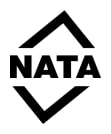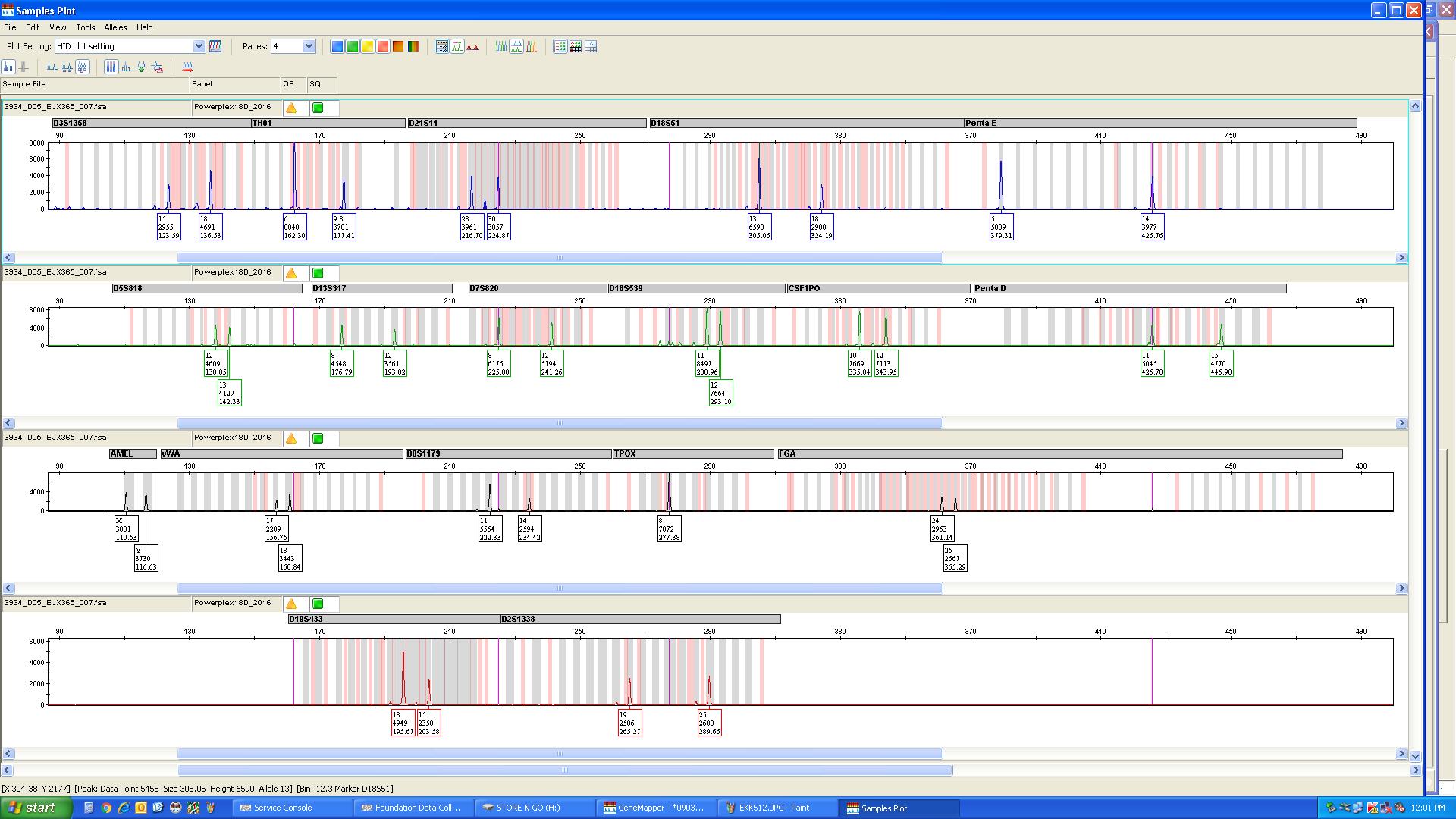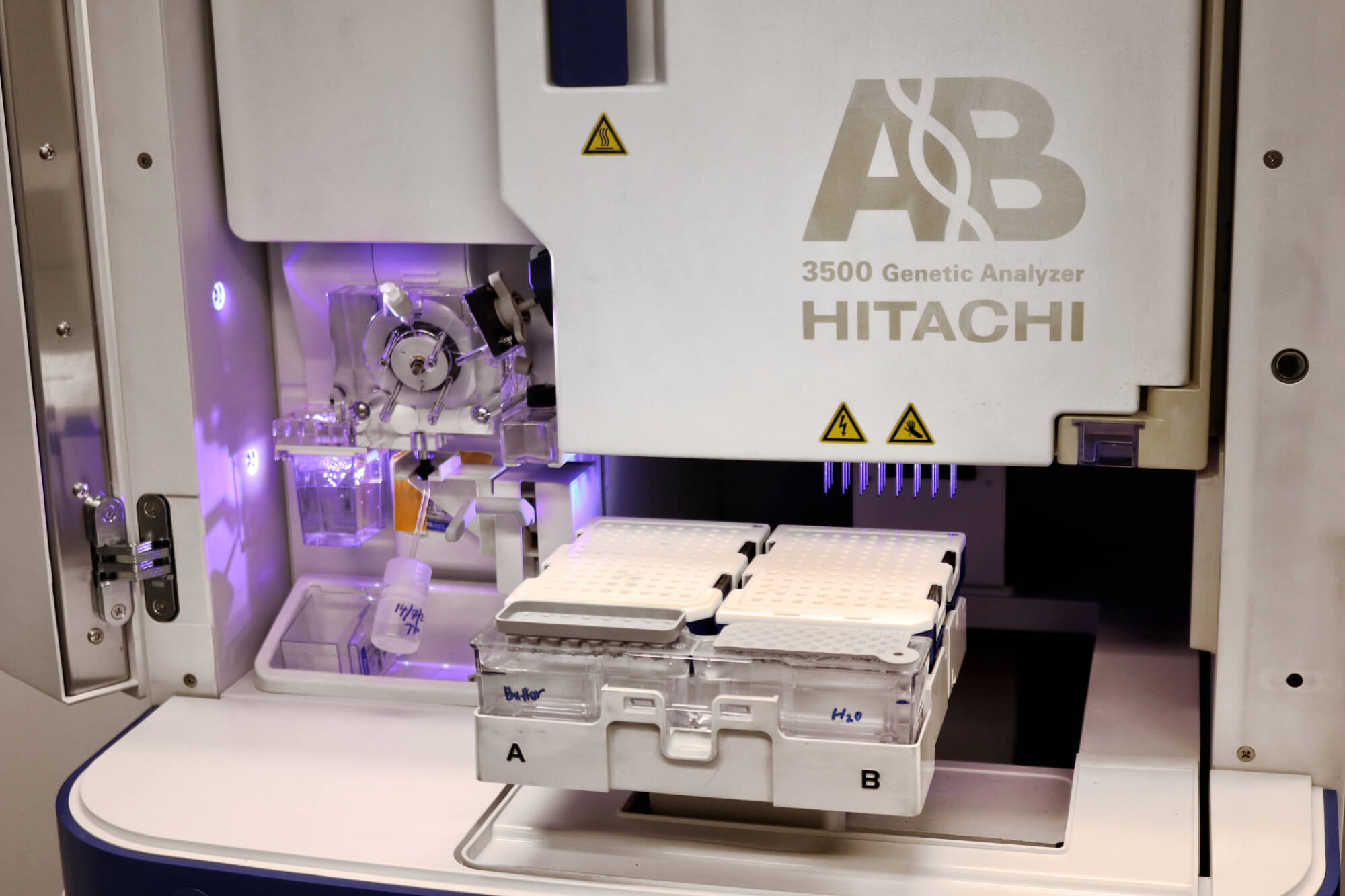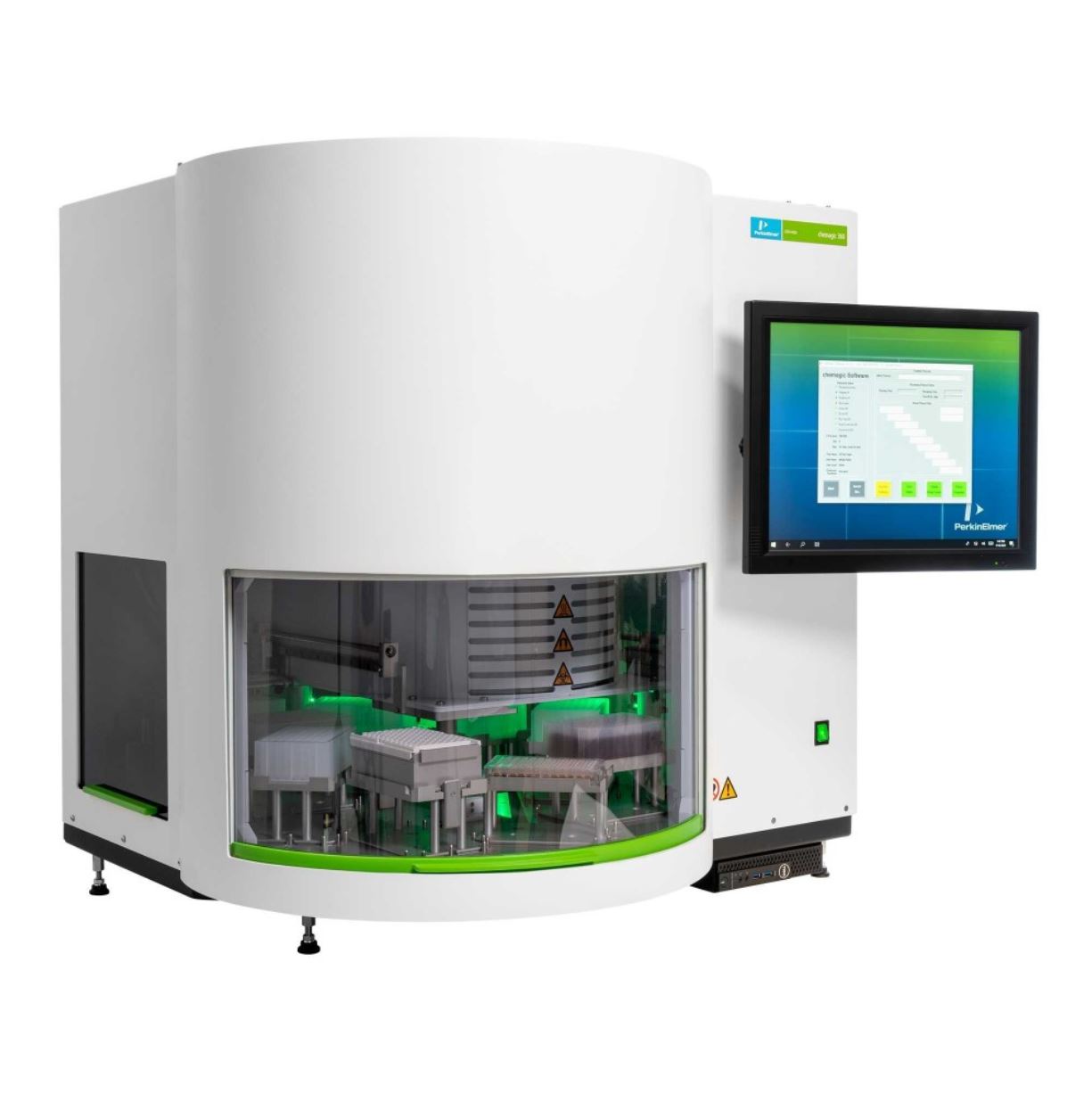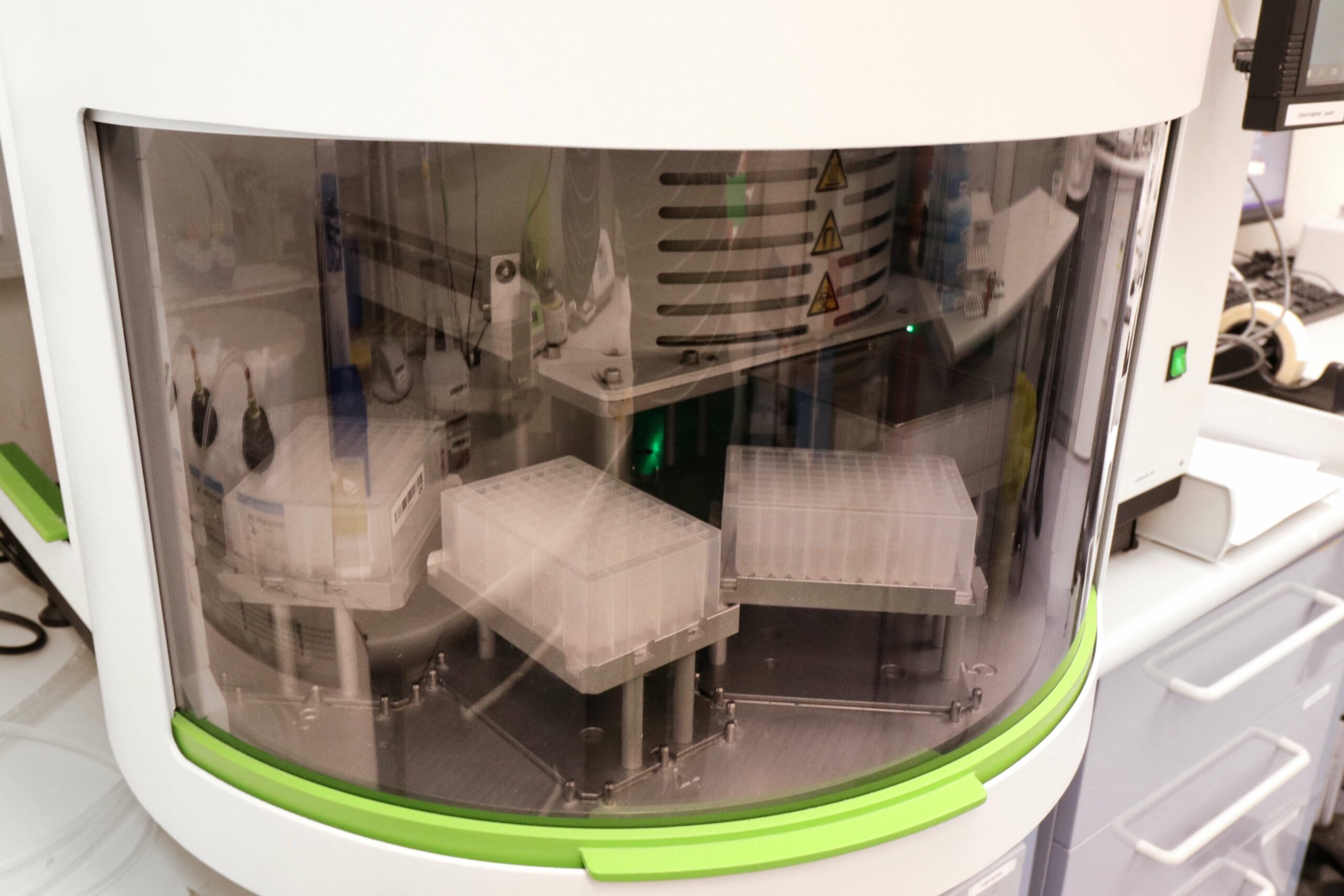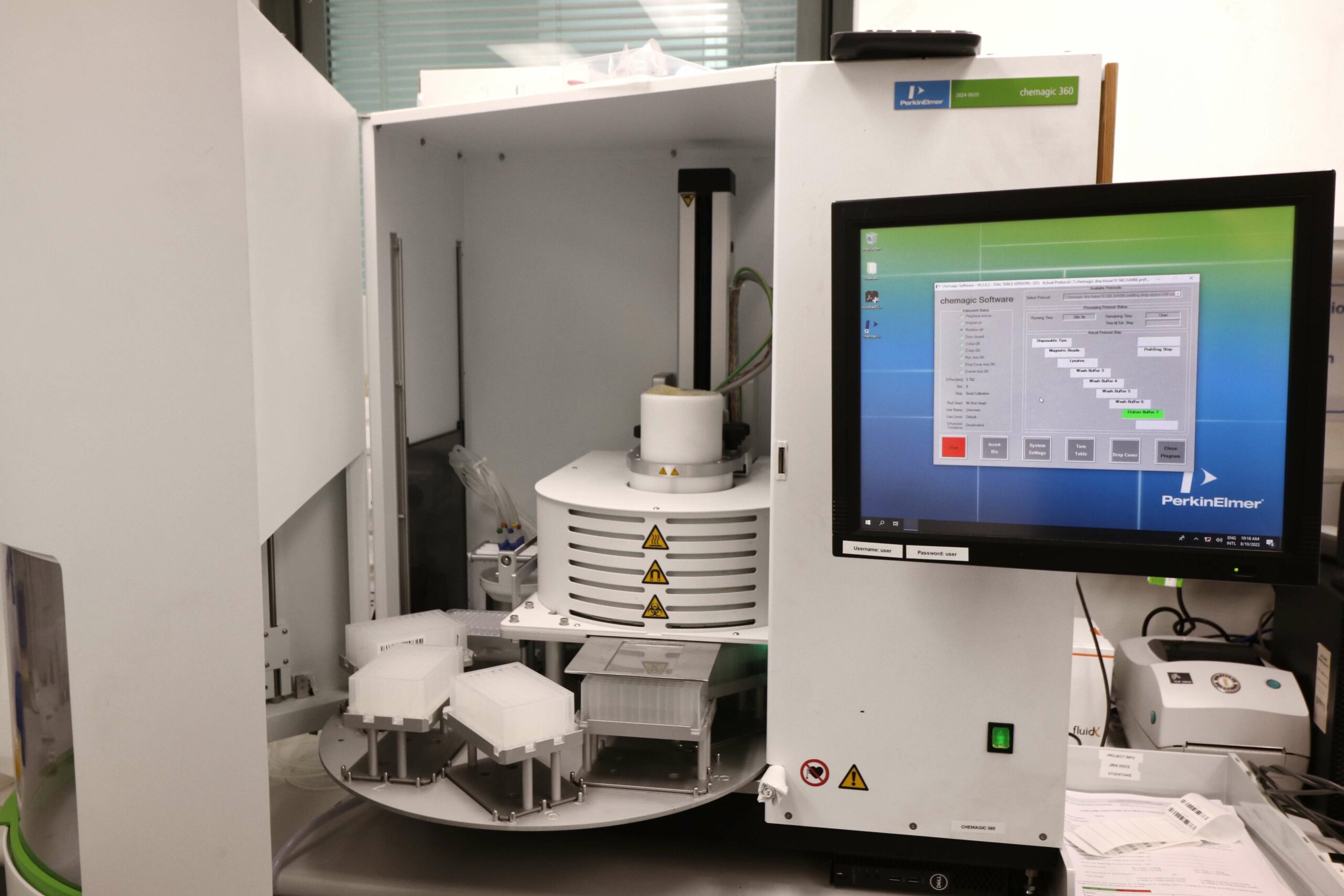// Molecular Services
Cell Line Identification
Cross-contamination and misidentified cell lines affects approximately one-fifth of biomedical research. Consequently, scientists may believe or claim that they are working with cells derived from one individual or animal species, to later learn that the cells were derived from a different individual or species altogether (Souren et al., 2022).
To provide researchers with confidence in the validity and integrity of their work, and to meet the requirements for acceptance of research publications in peer-reviewed journals, we offer cell-line identification services to authenticate human and mouse cell lines.
- Cell Line Identification and Authentication (human)
- Cell line Identification and Authentication (mouse).
- Mycoplasma testing (Mycoplasma hyorhinis, Mycoplasma orale, Mycoplasma hominis, Mycoplasma arginini, Mycoplasma salivarium, Mycoplasma pirum, Mycoplasma fermentans, Acholeplasma laidlawii. Mycoplasma pneumoniae, Mycoplasma gallisepticum, Mycoplasma genitalium, Mycoplasma penetrans, Mycoplasma synoviae, Mycoplasma bovis, Mycoplasma hyopneumoniae, Ureaplasma urealyticum and Spiroplasma citri)
Our cell line identification services uses the PowerPlexR 18D System, which has 18 markers (seventeen STR loci and Amelogenin).
Our Mouse Cell Line Authentication Service uses a panel that was developed by the Consortium for Mouse Cell Line Authentication, to validate STR markers for intraspecies identification of mouse cell lines. The assay we use targets 19 mouse STRs (Interlaboratory study to validate a STR profiling method for intraspecies identification of mouse cell lines, PLoS ONE 14(6): e0218412).
Sanger sequencing and fragment analysis
Our medium throughput Sanger sequencing service offers quality expertise, advice and outcomes at competitive prices. Our flexible service modules allow you to choose the exact level of service your project requires. As part of Garvan’s Molecular Genetics Core Facility, we support researchers within the Research Precinct, as well as external clients.
We can extract from other sample material. Please contact us: gmg@garvan.org.au
We offer six distinct capillary sequencing and fragment separation services, along with post-sequencing services, all of which are facilitated through our Sample Submission Portal:
Premix PCR product or plasmid + primer and SEQ
This is our fastest and most economic service. Submit your premixed sample (PCR product or plasmid mixed with 3.2 pmol of primer) and receive the results within 24 hours
Plasmid mix and SEQ
Submit your plasmid DNA and nominate a primer from the list available in our Sample Submission Guidelines, or send us your primer.
PCR mix and SEQ
Send us the PCR product you are interested in and send us the primer you want to use for sequencing.
PCR setup and SEQ
Submit your genomic DNA sample to us with the primer sequence or the primers that you want to be used in the PCR and we will amplify the region of interest and sequence the PCR product.
PCR design and SEQ
Send us the DNA sequence you are interested in or define the gene or exon you would like to have sequenced and submit your genomic DNA sample to us, we will amplify the region of interest with designed primers and sequence the PCR product.
Fragment separation with or without size standard
Our fragment analysis service provides both capillary separation and analysis services for fluorescently labelled DNA fragments. For this service, you will perform the PCR and send us the PCR product for electrophoresis. We can run your premixed samples (samples + size standard) or you can send us your samples and we will add size standard (GS 600 or GS 500 – please specify when you submit your samples) and perform the fragment analysis run.
DNA & RNA Extraction
GMG provides a comprehensive DNA & RNA extraction service embedded in our NATA ISO 17025 accredited quality system. We extract from all kinds of primary sample material ready for NGS or sensitive post extraction processes. We use automated and manual procedures, depending on sample throughput and preciousness of sample material. We can extract DNA and RNA together or separately from as low as a few cells.
The following extraction process for DNA are listed below:
- DNA buffy coat, whole blood.
- DNA from soft tissue or cells.
- DNA from hard tissue requiring homogenisation.
- DNA from buccal swab (OraCollect).
- DNA from FFPE or similar preservation.
- DNA from serum, stool or soil.
The following extraction process for RNA are listed below:
- RNA from buffy coat or whole blood.
- RNA from soft tissue or cells.
- RNA from hard tissue requiring homogenisation.
- RNA from FFPE or similar preservation.
- RNA from blood via PAXgene
You can choose from the following quality control measures post extraction:
- Nanodrop quality check.
- Qubit quality check.
- TapeStation 4200 quality check.

